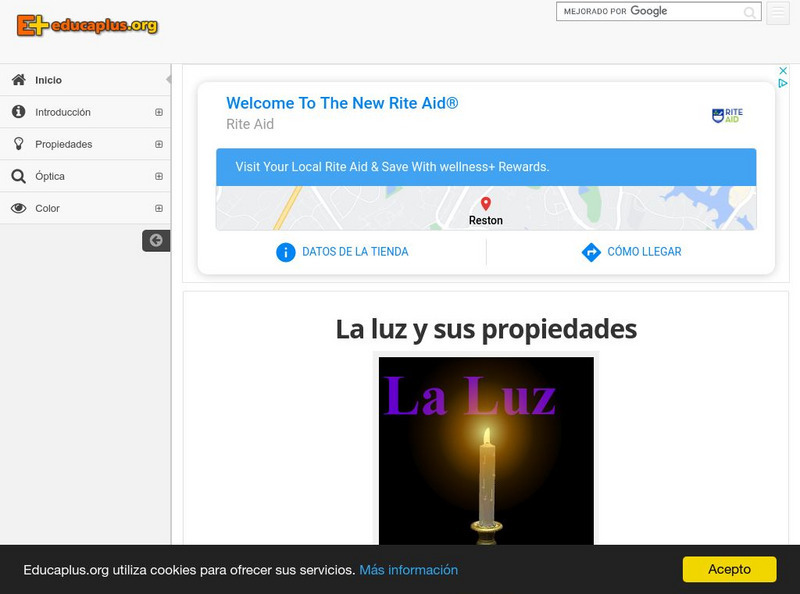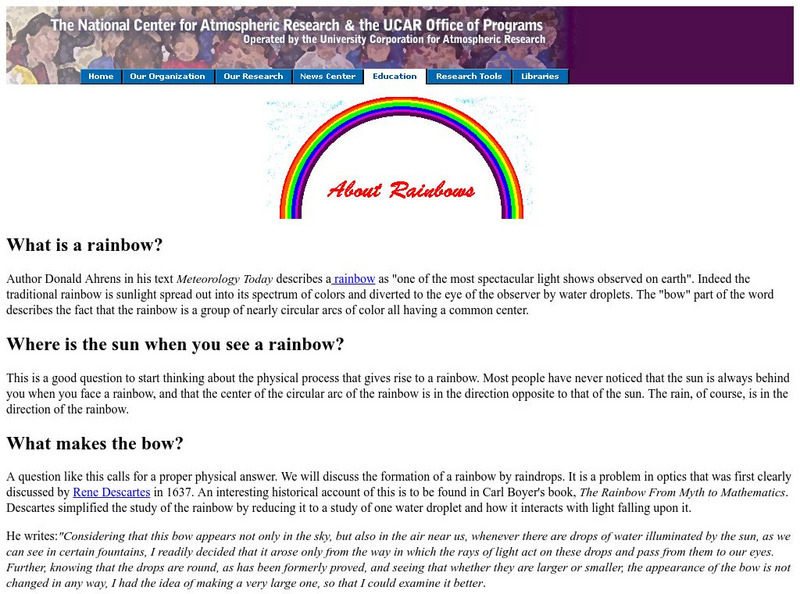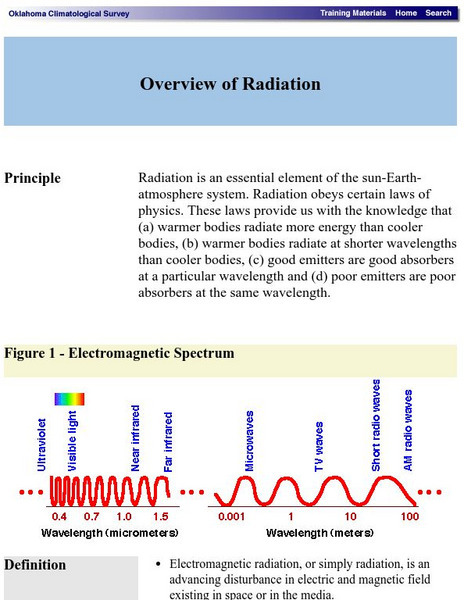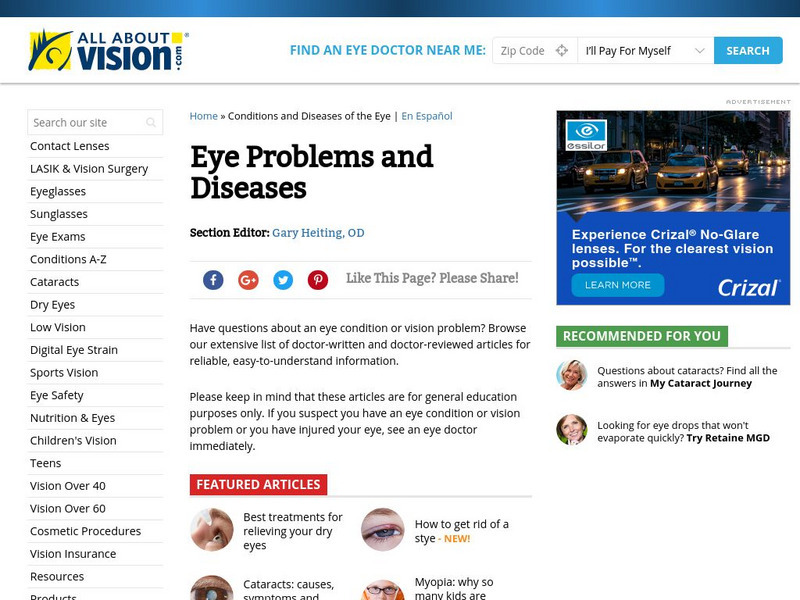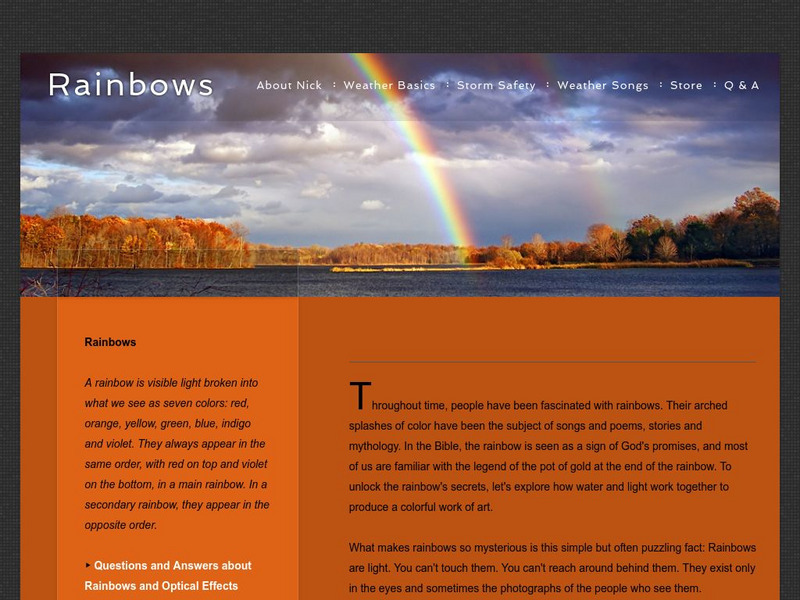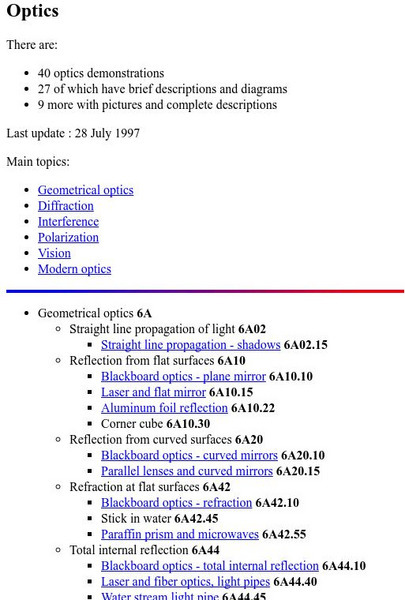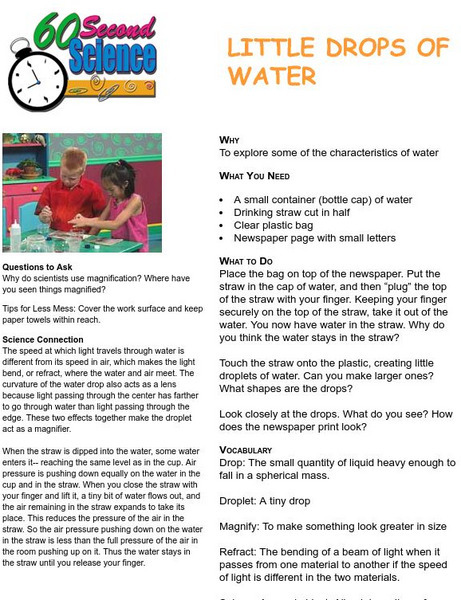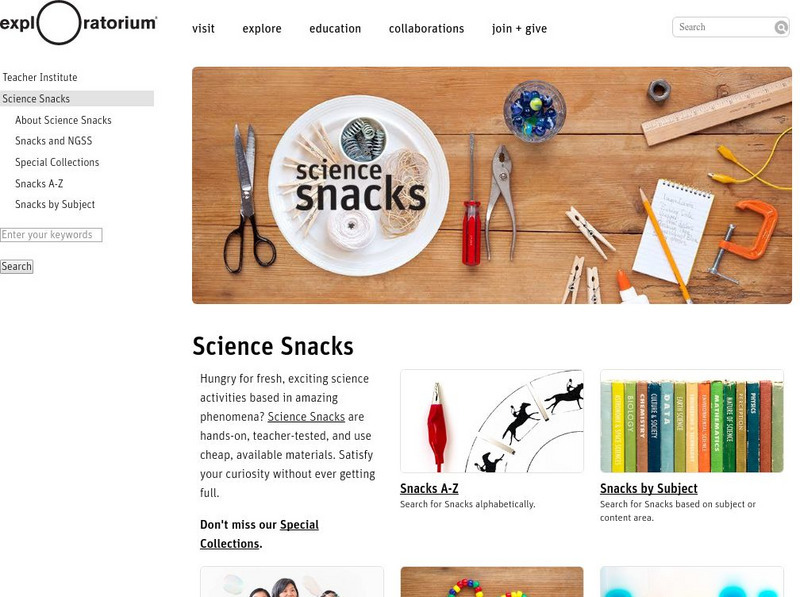Better Lesson
Better Lesson: Waves Performance Assessment Part 2
Students will use tools and materials to design and build a device that uses light or sound to solve the problem of communicating over a distance. Resources included are videos of the lesson in action, a student worksheet, and an...
Educaplus (Jesús Peñas Cano)
Educaplus: La Luz
What do you know about light? Learn about it through this interactive site. At the end you can take a test to test your knowledge. A scientific calculator is also provided.
Cosmo Learning
Cosmo Learning: Applied Science and Technology 210: Electrical Engineering
A collection of video lectures from a course that explores the application of electrical engineering topics. Webpage includes twenty-eight lectures from a professor at the University of California, Berkeley. Lectures vary in length and...
Curated OER
Reekos Mad Scientist Lab: Light Refraction
Here are simple instructions for creating a prism using a glass of water, a small mirror, and a piece of paper.
University Corporation for Atmospheric Research
Ucar: About Rainbows
This site from the University Corporation of Atmospheric Research provides an illustrated article about the phenomenon of rainbows.
Other
The Disgustoscope
This is a resource to teach optics, while building a modified kaleidoscope that will provide 3-dimensional images.
University of Wisconsin
The Why Files: Make a Rainbow
Make a rainbow by changing angles and placement of the observer, the sun, and the rain.
Oklahoma Mesonet
Oklahoma Climatological Survey: Overview of Radiation
This site details what radiation is, the physics of radiation, and radiative transfer as it occurs in nature. Content explores the electromagnetic spectrum, electromagnetic waves, properties of radiation, and solar radiation.
Physics Classroom
The Physics Classroom: Reflection and Mirrors: Optics Bench Interactive
Find out about the physics behind those fun-house mirrors. Students manipulate a virtual optics bench to explore the images formed by mirrors and lenses.
Other
All About vision.com: Eye Conditions and Diseases
Many articles with consumer information about lenses, eyewear, eye problems, and unique eye conditions. Vast content and many links to off-site information.
CK-12 Foundation
Ck 12: Fourth Grade Science
This customizable digital textbook covers topics related to fourth-grade science. It is Next Generation Science Standards (NGSS) aligned.
Curated OER
Refraction of Light
The meaning and cause of refraction--as well as Snell's law of refraction--are discussed. Includes an interactive problem-solving form in which visitors relate angles of refraction to the incident angle and the indices of refraction.
Curated OER
Web Gallery of Art: Newton's Discovery of the Refraction of Light
An image of "Newton's Discovery of the Refraction of Light", created by Filippo Pelagio Palagi in 1827 (Oil on canvas, 167 x 216 cm).
Curated OER
Weather Dude: Rainbows
Informational site allows users to discover what makes a rainbow. Discover how they form and learn some interesting facts about them along the way.
Exploratorium
Exploratorium: Water Sphere Lens
A discussion of how to make a magnifying lens exhibit using a water-filled flask and a light bulb. Consists of assembly instructions and a "To do and notice" section. Great for a teacher demonstration or a student project.
Other
United States Master Swimming: Fiber Aquatics
The principle of total internal reflection is discussed in this article. The appearance of objects from inside the water of a swimming pool is compared to the path of light in a fiber optic cable.
Wolfram Research
Wolfram Science World: Fresnel, Augustin
This site from ScienceWorld provides a short biographical sketch of Augustin Fresnel (1788-1827 CE) and describes his most notable scientific discoveries and contributions. Links are provided throughout for additional information.
Boston University
Bu: Optics Demonstrations: Polarization
Several short descriptions of demonstrations pertaining to polarization principles. Suitable as a supplement for a teacher lesson plan or as an idea-generator for a student project.
Other
60 Second Science: Little Drops of Water Experiment
Explore the properties of water and observe how drops of water can act as a magnifying lens.
Synopsys
Synopsys: A Gentle Intro to Optical Design: Why Is the Sky Blue?
Discusses Rayleigh scattering in plain language and attributes the blueness of the skies to this phenomenon. Discussion of scattering is just one topic of many on this lengthy page of optical topics.
University of St. Andrews (UK)
University of St. Andrews: Augustin Fresnel
A short biographical sketch on the life and work of Augustin Fresnel (1788-1827). Comments on a few of his scientific accomplishments.
Exploratorium
Exploratorium: Snacks
Exploratorium's snacks aren't edible, but they are good! Use your science skills to discover gravity, learn about biology, do fun experiments.
Optical Society
Optical Society of America: Optics for Kids: Watch Tv Upside Down
An experiment to invert a television image using a magnifying lens. Accompanied by an explanation of what's happening.
Science4Fun
Science4 Fun: How Rainbows Work
Learn how rainbows work by reading this illustrated explanation.
Other popular searches
- Refraction of Light
- Science Light Refraction
- Light Refraction Water
- Lab on Light Refraction
- Reflection Refraction Light
- Prism Light Refraction
- Light Refraction by Prism
- Refraction of Light Mirrors
- Light Refraction Slide
- Science Refraction of Light
- "Refraction" Light
- Science: Refraction of Light

